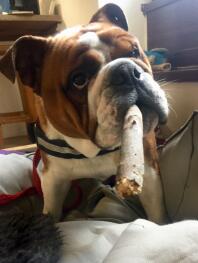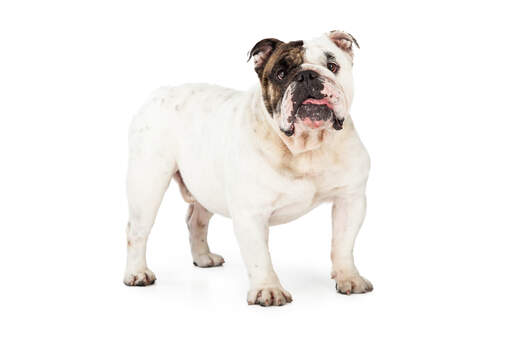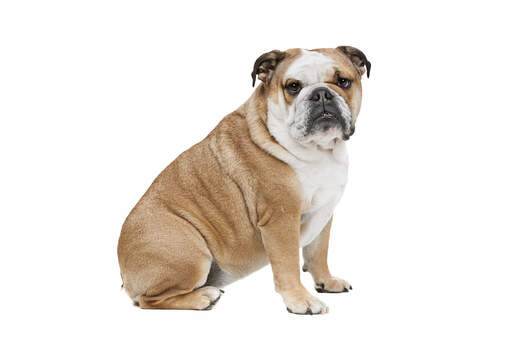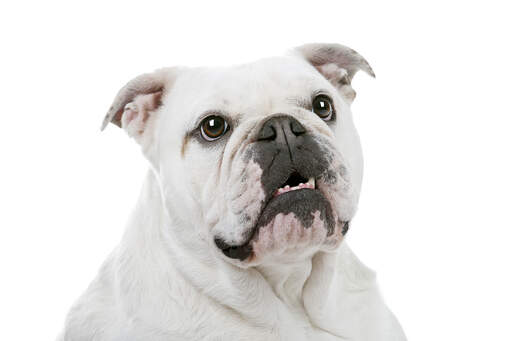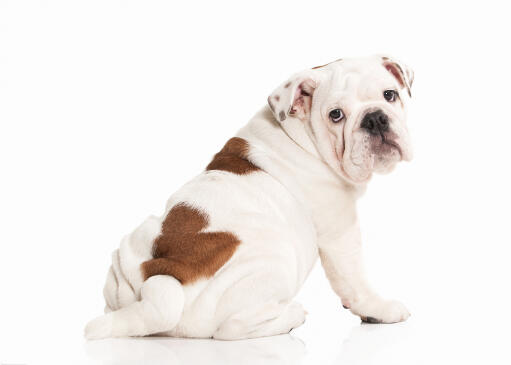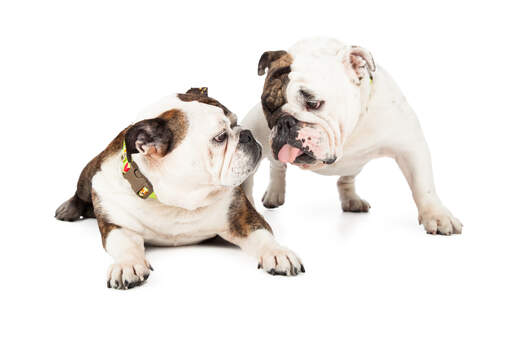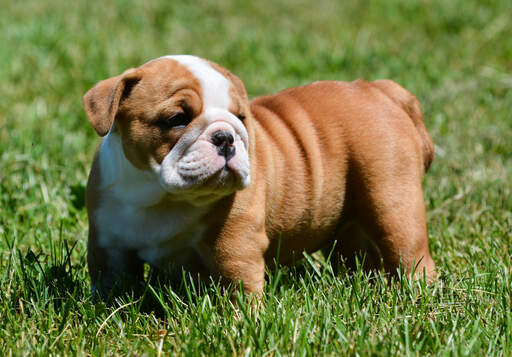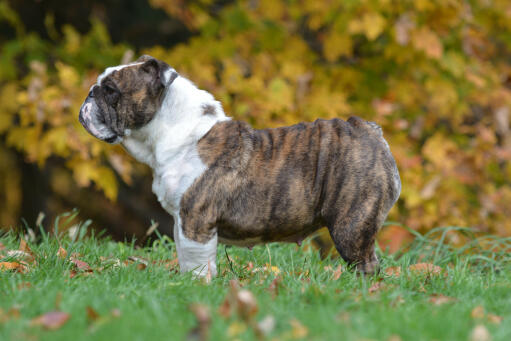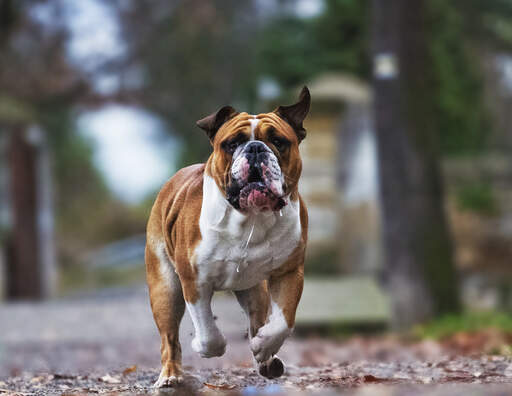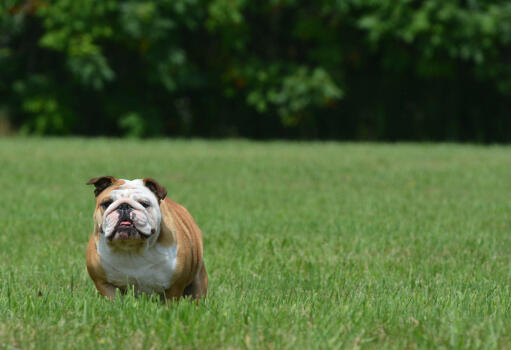English Bulldog Dogs









History
The English Bulldog originated in England around the 13th Century and was used in the 'sport' of bull baiting. The Bulldog would bite the bull on the nose and not let go. It was believed that the beef tasted better if the bull had been baited. Bull baiting was made illegal in 1835, but the Bulldog's character won through and it soon became a popular pet and symbol of England.
Behaviour
Seen as the couch potato of the canine world, Bulldogs are more than happy to spend their days asleep. Curling up on the sofa (they might need a helping hand to get up), with the occasional tummy rub is ideal for this breed. They are a calm, placid and good natured breed, excellent with children who respect their stubborn streak. Once a Bulldog has made up it's mind, you will find it hard to change it. They have a very strong will, but crave attention and are family orientated. Bulldogs generally get on well with other pets but can sometimes be aggressive towards other dogs if not properly socialised. With regard to walks, it is best to take your dog for short walks, little and often. A 5 mile hike is not compatible with a Bulldog. When he's had enough, he'll stop and nothing will get him going again. As a breed, Bulldogs like to chew, so hide your shoes and provide plenty of chew toys and raw hide type bones. They drool and slobber, especially after eating and will need a face wash most days due to the folds in their faces. Training will be a challenge, they are very slow to learn anything. Due to breeding to achieve the flat nose of the classic Bulldog, they sometimes develop breathing problems. They will wheeze, snore and snort, but this is part of their charm. They dislike warm weather and will seek out somewhere cool to nap. Bulldogs are one of the few breeds that cannot swim.
Temperament
English Bulldogs have a docile and joyful temperament. That said they have a stubborn streak, combined with their brute strength means that once they have decided to do something you will have a tough job moving them.
Generally great with children and other pets it will take a lot to provoke the Bulldog into any aggressive behaviour. A brisk walk daily is sufficient for this dog who will be quite content snoring the day away.
Health Problems
Health problems that may affect English Bulldogs include canine hip dysplasia (CHD), elbow dysplasia, luxating patella (dislocation of the kneecap), invertebral disk disease (pressure on spinal cord that can cause paralysis), heart disease, allergies, brachycephalic syndrome (breathing problem), many eye problems and a high risk of overheating if overly exerting themselves.
Breed Details
- Status: Common
- Life Expectancy: 8 - 12 years
- Weight: 20 - 25 kg
- Height: 12-15"
- Rare: No
- Coat: Short
- Grooming Requirements: Once a week
- Town or Country: Either
- Minimum Home Size: Small House
- Minimum Garden Size: Small to Medium Garden
- Breed Type: Companion Dog
- Size: Medium
- Energy Level: Low
- Exercise Required: Up to 1 hour
English Bulldog Pictures
